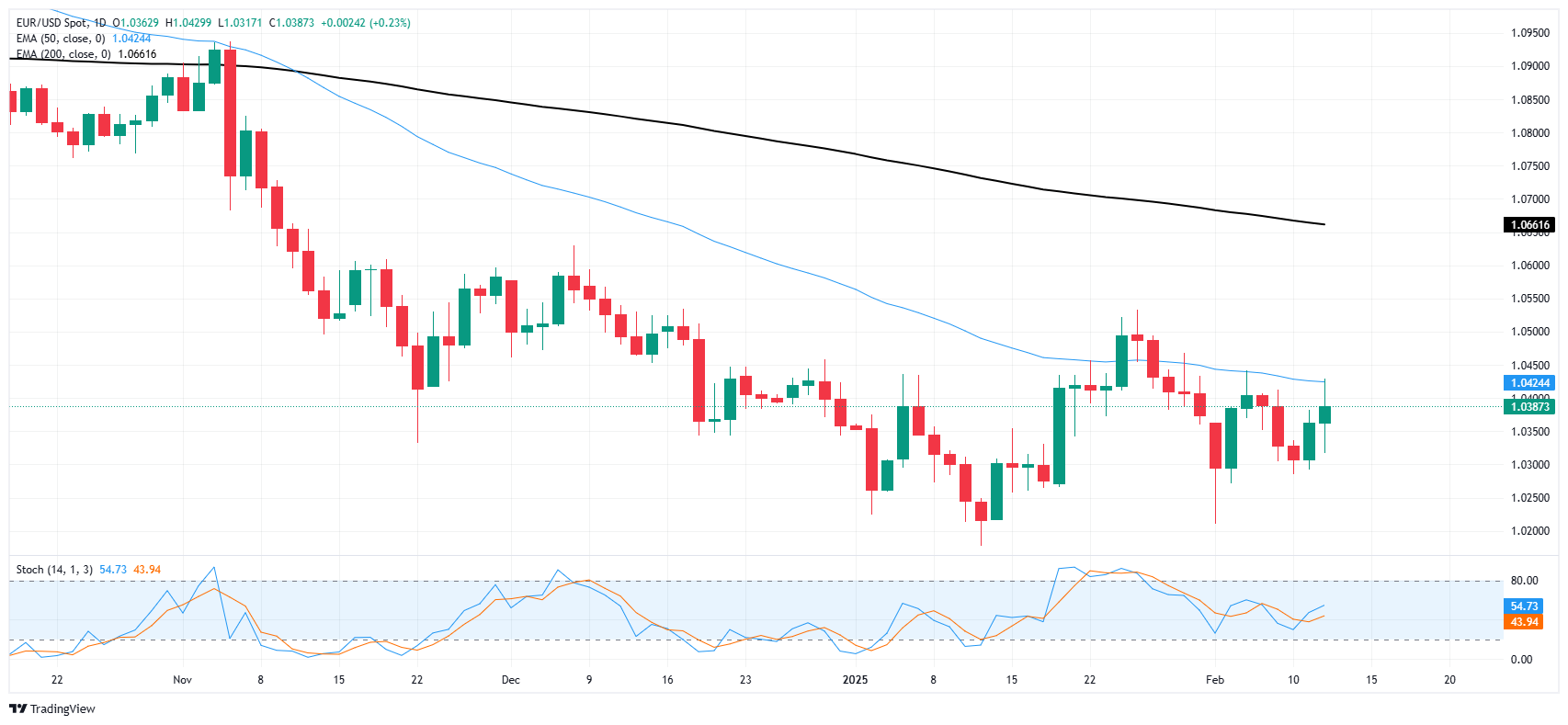EUR/USD regains some ground, but remains hobbled by key technicals
- EUR/USD recaptured a scant 0.2% on Wednesday, but upside remains limited.
- US inflation metrics rule the roost this week as prices rise faster than expected.
- US PPI inflation will follow up Wednesday’s unexpected CPI upswing.
EUR/USD churned on Wednesday, testing the low end through most of the intraday session before breaking higher after investors tried to shake up an unexpected upswing in US Consumer Price Index (CPI) inflation. The key dataprint on Thursday will be US Producer Price Index (PPI) inflation, as European economic data takes a backseat this week.
Final Harmonized Index of Consumer Prices (HICP) figures from Germany are due on Thursday, but the non-preliminary print is unlikely to drive much volatility with the numbers well-forecast and fully priced in already. Headline German HICP inflation is expected to hold at 2.8% for the year ended in January.
Forex Today: Further US inflation gauges should rule the sentiment
In January, US CPI saw a notable increase, with the headline CPI inflation rising to 3.0% year-over-year, a bit higher than the expected 2.9%. The most significant portion of this increase came from the nearer end of the tail, where the month-over-month CPI came in at 0.5%. It’s interesting to note that markets had anticipated a month-over-month headline CPI of 0.3%, especially considering the previous figure was 0.4%.
On Thursday, core US PPI inflation is expected to take center stage. The median market forecasts suggest a slight decline to 3.3% year-over-year, down from 3.5%. However, the inflation uptick on Wednesday has made investors a bit uneasy, raising concerns about inflation becoming more deeply rooted in the US domestic economy.
EUR/USD price forecast
EUR/USD continues to churn in an uneasy pattern, wavering just south of the 50-day Exponential Moving Average (EMA) near,1.0425. Fiber is pinned beneath the key technical average, but short-sellers are having a difficult time developing momentum with a technical floor priced in near 1.0300.
EUR/USD daily chart
Euro FAQs
The Euro is the currency for the 19 European Union countries that belong to the Eurozone. It is the second most heavily traded currency in the world behind the US Dollar. In 2022, it accounted for 31% of all foreign exchange transactions, with an average daily turnover of over $2.2 trillion a day. EUR/USD is the most heavily traded currency pair in the world, accounting for an estimated 30% off all transactions, followed by EUR/JPY (4%), EUR/GBP (3%) and EUR/AUD (2%).
The European Central Bank (ECB) in Frankfurt, Germany, is the reserve bank for the Eurozone. The ECB sets interest rates and manages monetary policy. The ECB’s primary mandate is to maintain price stability, which means either controlling inflation or stimulating growth. Its primary tool is the raising or lowering of interest rates. Relatively high interest rates – or the expectation of higher rates – will usually benefit the Euro and vice versa. The ECB Governing Council makes monetary policy decisions at meetings held eight times a year. Decisions are made by heads of the Eurozone national banks and six permanent members, including the President of the ECB, Christine Lagarde.
Eurozone inflation data, measured by the Harmonized Index of Consumer Prices (HICP), is an important econometric for the Euro. If inflation rises more than expected, especially if above the ECB’s 2% target, it obliges the ECB to raise interest rates to bring it back under control. Relatively high interest rates compared to its counterparts will usually benefit the Euro, as it makes the region more attractive as a place for global investors to park their money.
Data releases gauge the health of the economy and can impact on the Euro. Indicators such as GDP, Manufacturing and Services PMIs, employment, and consumer sentiment surveys can all influence the direction of the single currency. A strong economy is good for the Euro. Not only does it attract more foreign investment but it may encourage the ECB to put up interest rates, which will directly strengthen the Euro. Otherwise, if economic data is weak, the Euro is likely to fall. Economic data for the four largest economies in the euro area (Germany, France, Italy and Spain) are especially significant, as they account for 75% of the Eurozone’s economy.
Another significant data release for the Euro is the Trade Balance. This indicator measures the difference between what a country earns from its exports and what it spends on imports over a given period. If a country produces highly sought after exports then its currency will gain in value purely from the extra demand created from foreign buyers seeking to purchase these goods. Therefore, a positive net Trade Balance strengthens a currency and vice versa for a negative balance.



